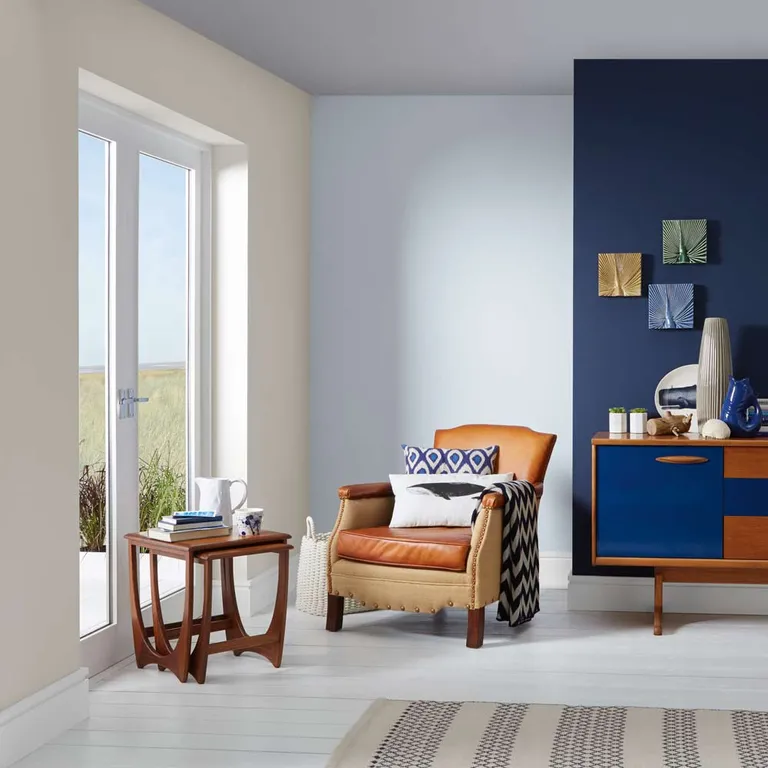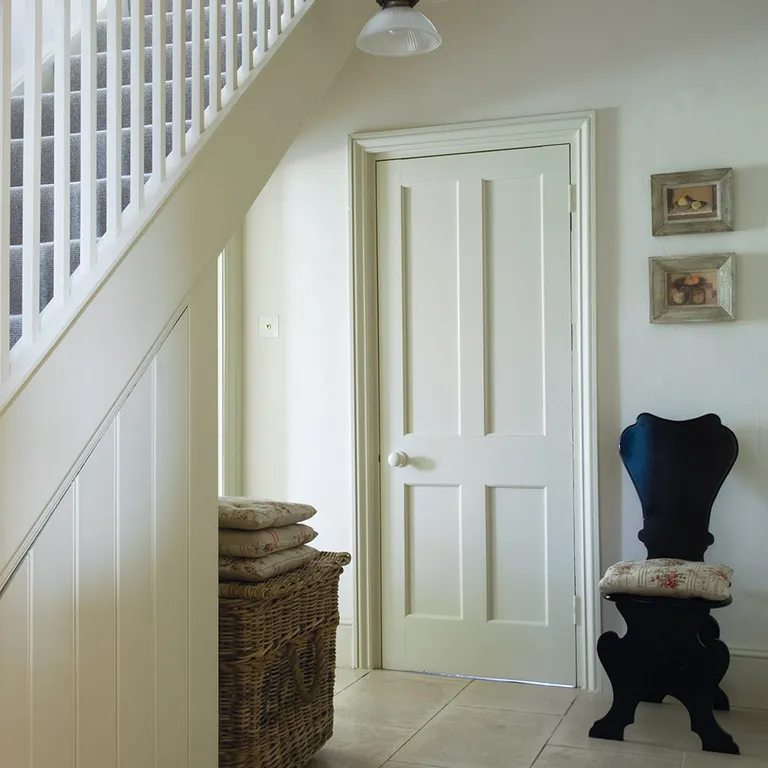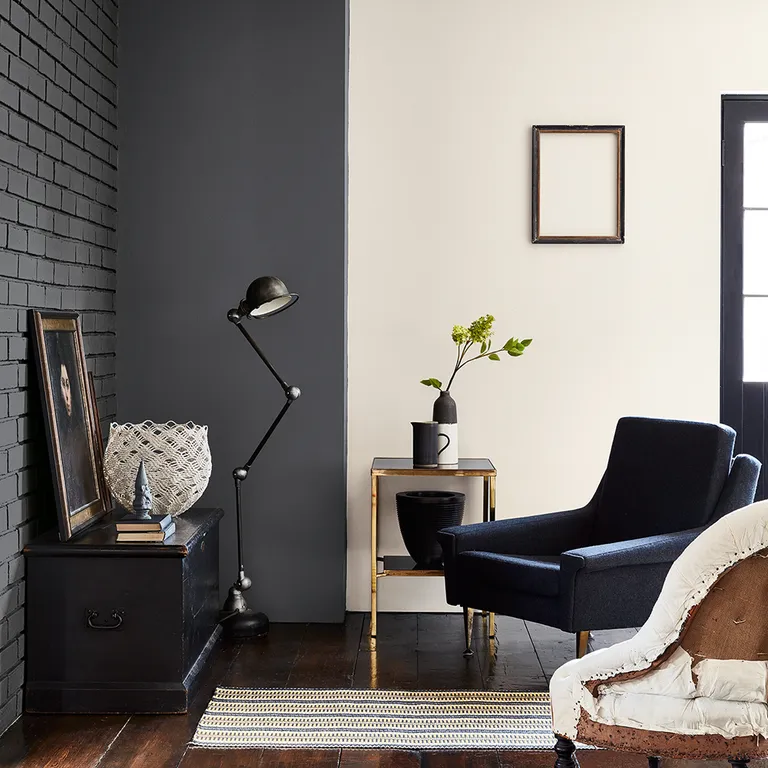Looking for the best white paint? This versatile neutral is one of the most popular shades for interiors, offering a blank canvas that brightens dark spaces and makes even the smallest rooms feel spacious and airy.
White is white, this surely has to be one of the easiest colours to decorate with, right? Wrong. You’ll discover this when you head to your local DIY and decorating store or type ‘white paint’ into a search engine and are confronted by tin after tin of white paints, all claiming to do slightly different things to your walls.
‘Brilliant White’, ‘Fresh Sheets’, ‘All White’, ‘Pure White’ – the options can seem endless. That’s why our Ideal Home decorating team and industry experts are on hand to help.
How to choose the best white paint
‘The way we interpret whites now is very different from the idea of pure white’ explains Patrick O’Donnell, Farrow & Ball Brand Ambassador. ‘White can vary from chalky to cool, icy blue right through to sludgy but wonderful green/ greys whites. The best way to select your white is by finding the undertone that best suits your style and home, and most importantly, the light aspect of your room.’

Image credit: Dulux
The best white paint for your walls will depend both on your natural preference toward warm or cool tones, and the aspect of the room you’re painting – so whether the windows face north, south, east or west.
Cool whites, which are generally recommended for south-facing rooms – contain hints of blue, green, or black. Whilst, warm white paints – often chosen for darker north-facing rooms – contain red or yellow undertones.
These undertones are amplified by the type of natural light a room gets, and can even be affected by the contents of a room which will reflect onto the walls and change the appearance of the paint hue.
For this reason, testing your paint choice before committing to an entire redecoration project is key. As Judy Smith, Crown Colour Consultant, advises: ‘Whites can change hue dramatically from room to room in the same house, let alone from a paint shop to your own home so always use tester pots to check the exact tone. Test at different times of the day and evening to see how the paint looks in both natural and artificial light.’
And in order to save you a small fortune on tester pots, our Ideal Home decorating experts have narrowed down the options to their tried-and-tested favourites. So read on to find the best white paint for you.
Best white paint for small, light-filled rooms: Brilliant white

Image credit: Future PLC
A staple for painters and decorators, pure brilliant white is devoid of all pigment. This means it reflects back nearly all the light that hits it, bouncing any natural daylight around the room to brighten dark corners.
Brilliant white paint is a good option for small rooms with a healthy source of natural light, but should generally be avoided in north-facing rooms where it can reflect blue tones and make a room feel cold and drab.
Pure white can also make a great accompaniment to deeper off-whites when used on woodwork and ceilings to create a fresh and calming look.
Best white paint for north-facing rooms: Warm white

‘Sail White’ by Crown
North-facing rooms tend to get a lot less sun throughout the day, so are naturally darker and prone to shadows. This means they can reflect back a greater amount of blue and grey tones, so using a pure white or cool-toned white paint can result in the shade looking a lot darker when it’s on the walls – and potentially a bit dismal.
‘Soft, yellow-based whites will lift a north-facing room,’ advises Farrow & Ball’s Patrick O’Donnell. ‘The undertone of a white will determine the feel and atmosphere of a room for example rooms we spend time relaxing in, in the evening we tend to want warmer and cosier, so we can relax so the added dose of red or yellow, will do this.’
For this reason warm white paints with undertones of yellow or red are generally recommended for north-facing rooms, where they’ll look a lot less ‘creamy’ than they would painted in a room with a south-facing aspect.

Image credit: Dulux
‘After a lot of deliberation I’ve just painted my light-deprived hallway in Dulux’s Jasmine White. It’s the ideal white to retain a warm quality in a dark shaded space, thanks to the pink undertones. I wanted to avoid grey undertones because the accent colour in the room is a blush pink.
Tamara Kelly, Editor Idealhome.co.uk
Best white paint for south-facing rooms: Cool white

‘Strong White’ by Farrow & Ball
A south-facing room gets a lot of natural daylight and can often be bathed in golden sunshine for a lot of the day. This means any underlying warm tones in a white paint – like yellow, red or brown – will be amplified, making a seemingly innocuous pale ivory white suddenly look decidedly yellow once on the walls.
Because south-facing rooms are generally the brightest in the house, a brilliant white paint can often feel quite harsh, bouncing that strong light around even more. After all, no-one wants to have to wear sunglasses in their white living room idea!
Consequently, if you want to achieve the appearance of true white in a south-facing room, it’s best to err on the side of cooler tones which will balance out the warmth of the natural light.
‘Cool whites have hints of grey, blue, green and violet in them and they create a tranquil breezy look, which is perfect for a room that gets lots of light and sun,’ says Marianne at Dulux.
‘I’m a big fan of the soft grey appearance of ‘Bone White’ from Fired Earth. It’s clean and fresh – exactly what you want from a white – but the grey tones have extra depth, which adds interest and makes sure it doesn’t feel too stark.’
Heather Young, Brand Editor, Ideal Home
How to decorate with shades of white: Walls and ceilings

Image credit: Future PLC/ Richard Gadsby
As interior designers know, a white room painted entirely in one solid shade can look flat and featureless. Instead try combining subtle variations on walls, woodwork, cornicing and ceilings to enhance the proportions of a room. Use the brightest white on the ceiling to give an impression of height and slightly darker shades to pick out interesting details. Look for coordinating tones when painting floorboards white.
‘Always consider the light aspect of the room you plan to paint, and all the other elements incorporated into your room such as fabrics, furniture and artwork’ advises Patrick O’Donnell at Farrow & Ball. ‘An easy way to do this is by creating a mood board to see all the components in one place this will give you greater context for the result.’
‘Identify which colours you are drawn to, then simply work your way up your chosen palette to find an off white tone with a hint of your chosen shade,’ advises Jenny Luck, Colour Consultant at Little Greene. ‘This will give contrast to the wall colour whilst having a soft transition from the walls onto wood woodwork and ceilings. Much softer and easier on the eye.’
‘For me, the best overall white is Belgravia from Mylands. It’s a deeper shade which can turn from a beige-white to a grey-white in different lights, but both are beautiful in tone. I pair with lighter tones on the ceilings and woodwork to create depth in a room.’
Nicky Phillips, Decorating Editor, Ideal Home
How to get a flawless finish on woodwork

‘James White’ by Farrow and Ball
To get the best from a crisp white paint you need to put in a bit of prep. Charlotte Cosby, Head of Creative at Farrow & Ball, recommends applying a primer and undercoat to make the finish long-lasting and to fill in any small defects.
Matt and flat matt finishes hide a multitude of sins so it’s a popular choice for walls and ceilings. Satinwood and eggshell finishes work beautifully on woodwork, particularly skirting boards and doors that need a little extra coverage.
While white is versatile enough to work in almost any style, Marianne Shillingford, Creative Director at Dulux, advises choosing something robust that’s easy to keep clean and pristine. ‘The finish is less important than the formulation, because white paint has the tendency to show up every little mark,’ she says. ‘You need to be confident that it will resist spills, scuffs and everyday wear-and-tear.
‘Dulux Easycare is designed to be 20 times tougher than standard emulsion. Resisting dirt by making it ‘bead’ on the surface rather than soak in and stain,’ Marianne adds. ‘Any grotty stuff is easy to wipe off, and the paint stays perfectly matt and perfectly white for much longer.’ Ideal for a durable solution in hallways or white kitchen ideas.

‘Slaked Lime’ by Little Greene
‘Choosing the right shade of white for your aspect will be beneficial to the overall effect’ explains Patrick O’Donnell at Farrow & Ball Brand. ‘Cooler based whites are ideal for east-facing rooms with either a blue or green undertone, such as Cabbage White or James White. West-facing rooms will resonate beautifully with the addition of red-based undertones, such as Dimity or Joa’s White, adding to the warm afternoon glow.’
With our experts’ help, choosing the best white paint for your home now seems a whole lot easier.
The post Best white paint: choosing the right shade for walls, ceilings and woodwork appeared first on Ideal Home.














